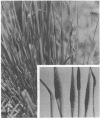Abstract
Balansia epichloë (Weese) and B. henningsiana (Moell.) were isolated from grasses in toxic fescue pastures. B. epichloë, cultured in a synthetic medium, was toxic to chicken embryos. Thin-layer chromatography and ultraviolet absorption data indicated that in submerged culture the fungus produced compounds with the indole or ergoline nucleus.
Full text
PDF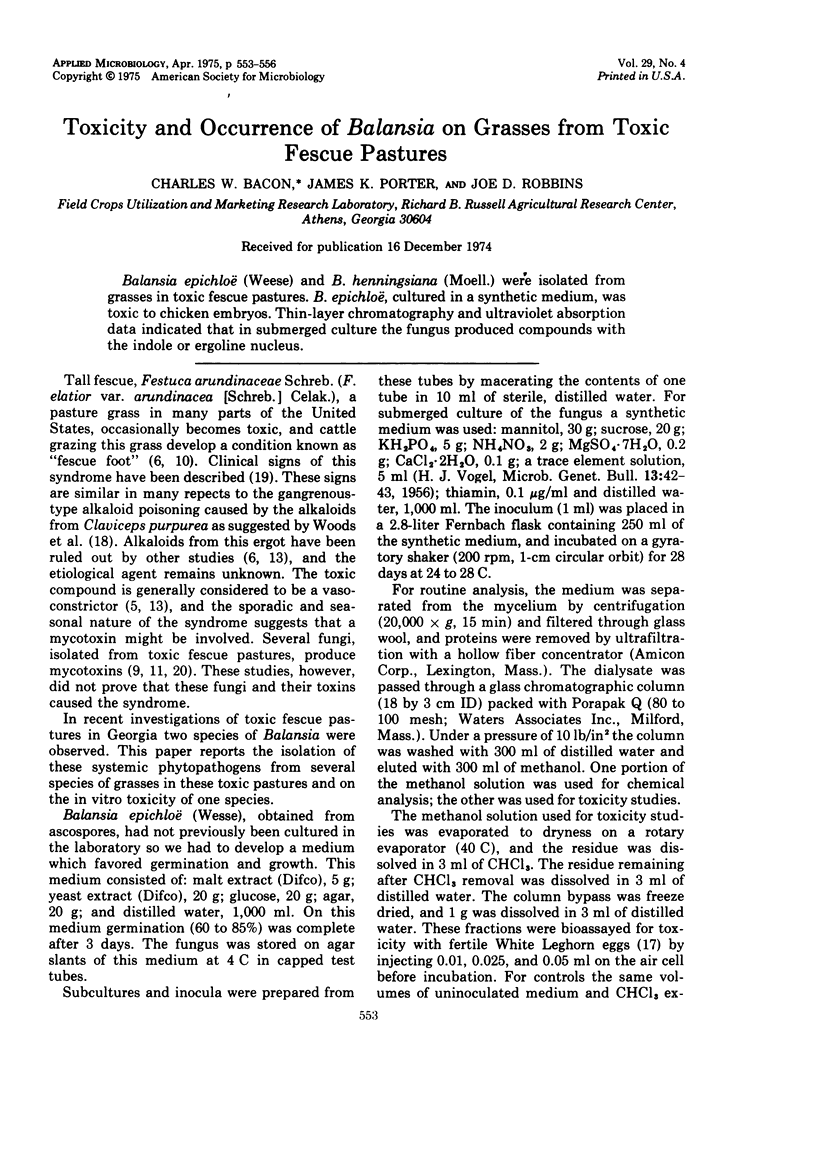
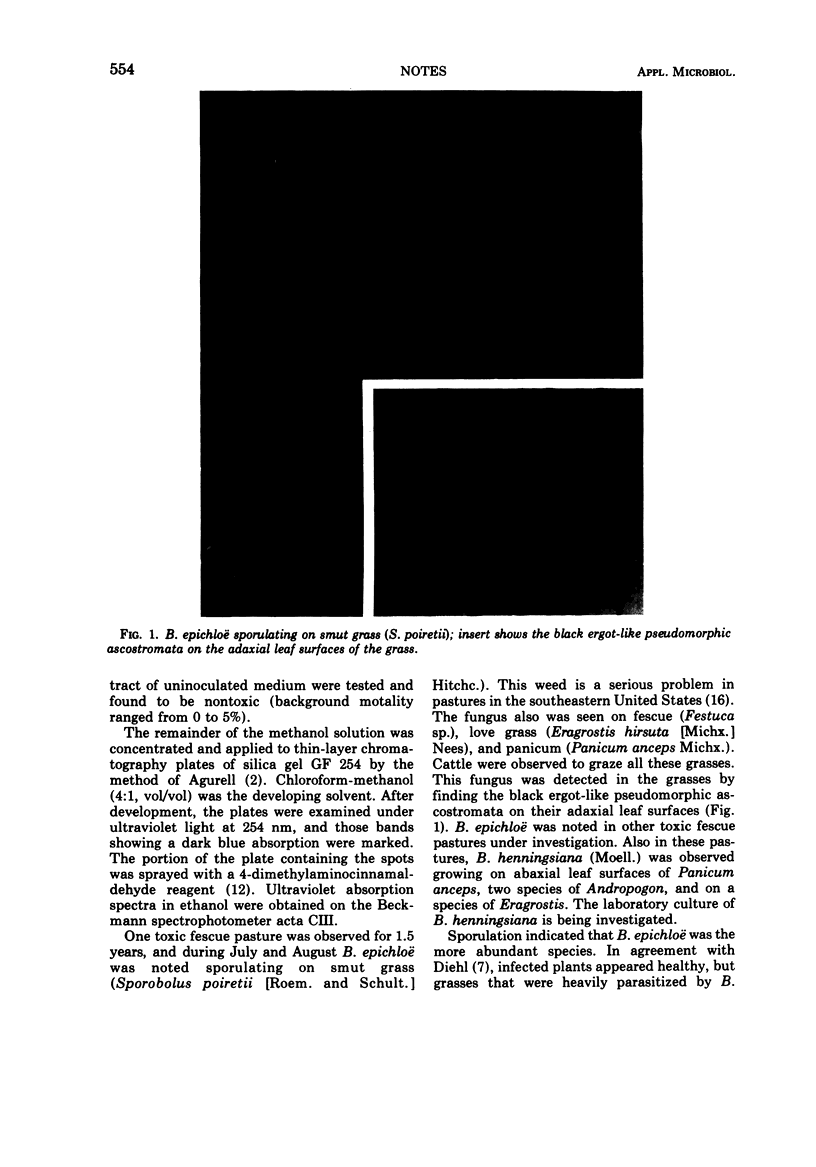
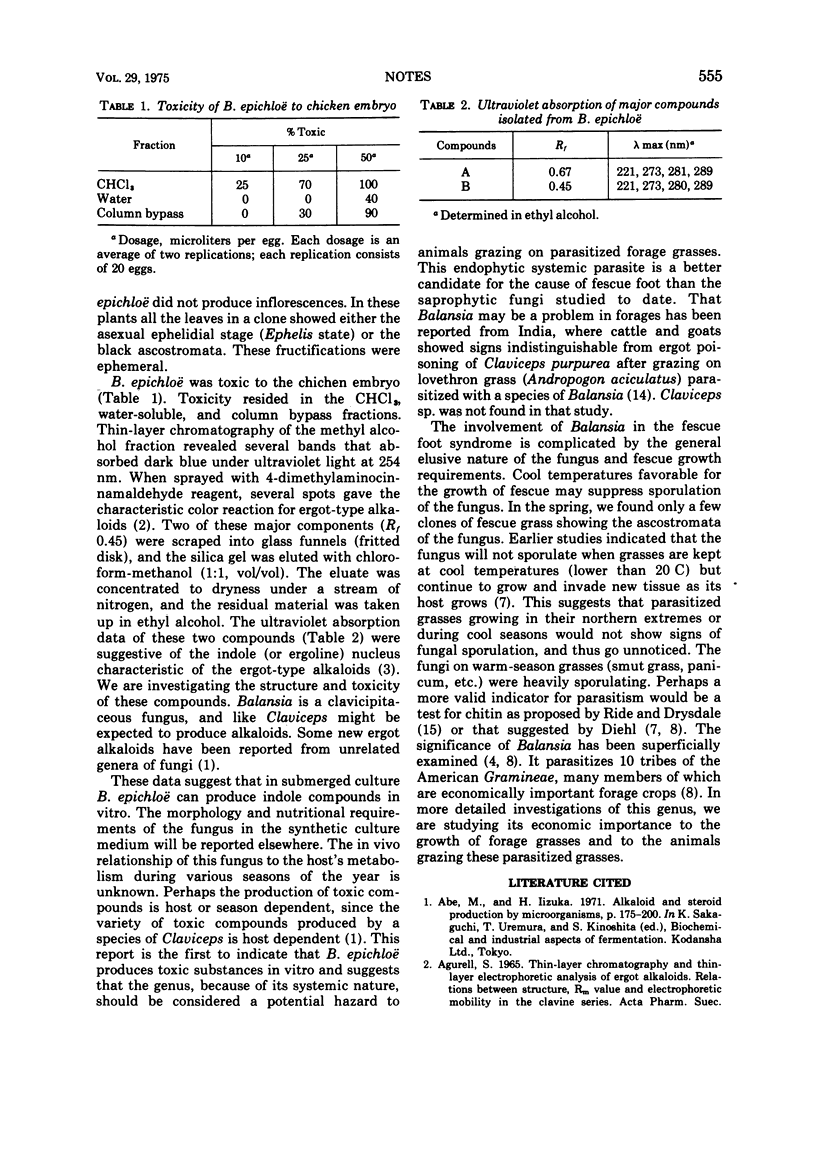
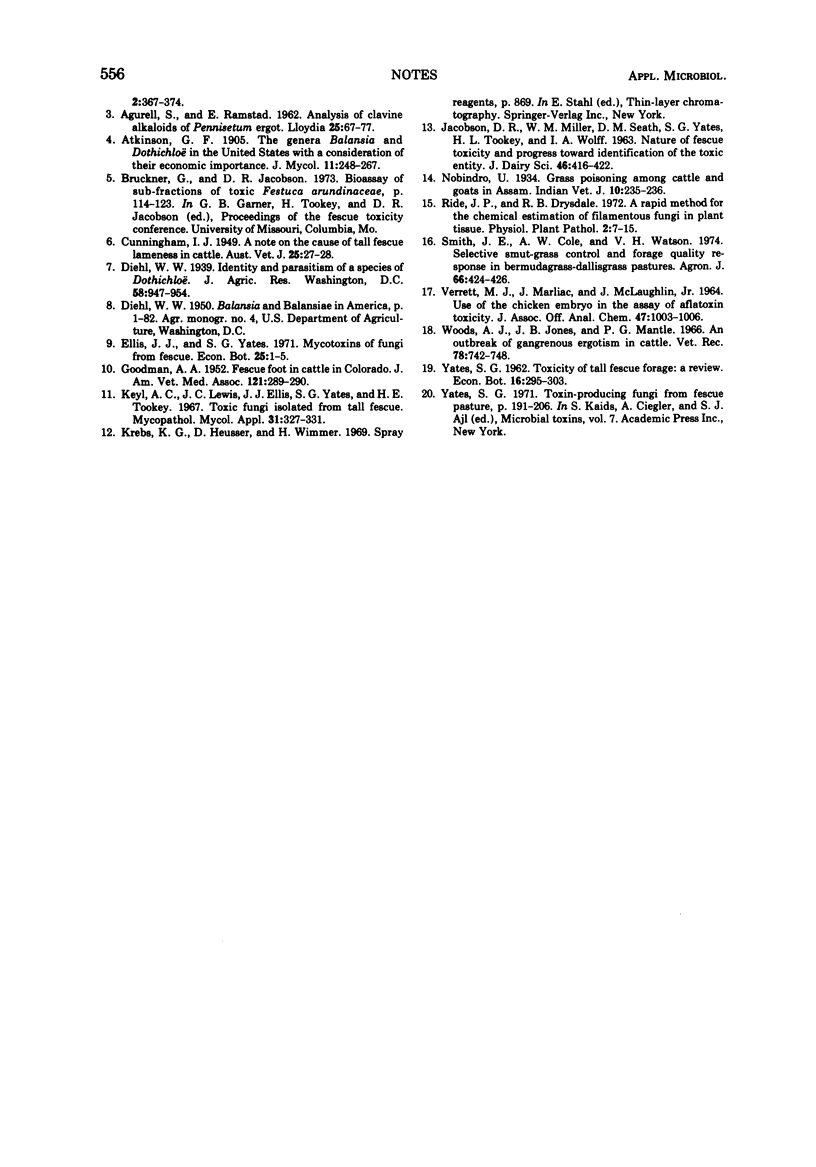
Images in this article
Selected References
These references are in PubMed. This may not be the complete list of references from this article.
- Agurell S. Thin-layer chromatographic and thin-layer electrophoretic analysis of ergot alkaloids. Relations between structure, RM value and electrophoretic mobility in the clavine series. Acta Pharm Suec. 1965 Nov;2(5):357–374. [PubMed] [Google Scholar]
- COLE H. N. Richard L. Sutton, M.D. 1878-1952. AMA Arch Derm Syphilol. 1952 Sep;66(3):424–426. doi: 10.1001/archderm.1952.01530280128027. [DOI] [PubMed] [Google Scholar]
- GOODMAN A. A. Fescue foot in cattle in Colorado. J Am Vet Med Assoc. 1952 Oct;121(907):289–290. [PubMed] [Google Scholar]
- Keyl A. C., Lewis J. C., Ellis J. J., Yates S. G., Tookey H. L. Toxic fungi isolated from tall fescue. Mycopathol Mycol Appl. 1967 Apr 28;31(3):327–331. doi: 10.1007/BF02053433. [DOI] [PubMed] [Google Scholar]
- Woods A. J., Jones J. B., Mantle P. G. An outbreak of gangrenous ergotism in cattle. Vet Rec. 1966 May 28;78(22):742–749. doi: 10.1136/vr.78.22.742. [DOI] [PubMed] [Google Scholar]



